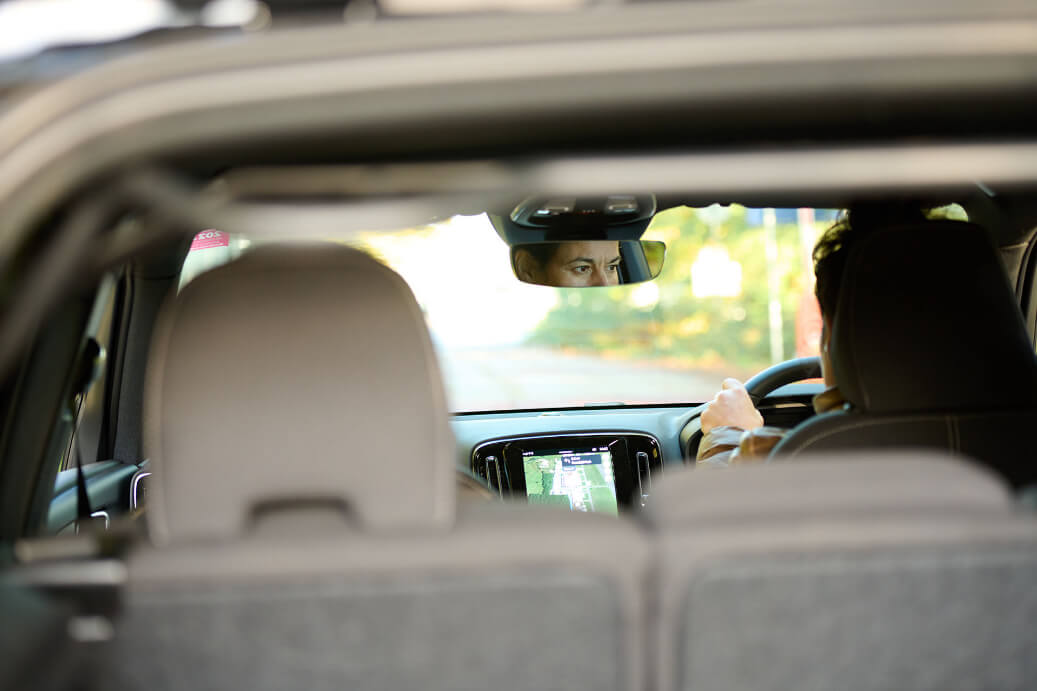Prepare your vehicle
It’s a good idea to have your vehicle fully serviced before winter starts and have the anti-freeze tested. If you can’t have it serviced, then do your own checks. In particular, check:
- Lights are clean and working
- Battery is fully charged
- Windscreen, wiper blades and other windows are clean and the washer bottle filled with screen wash
- Tyre condition, tread depth and pressure (of all the tyres, including the spare)
- Brakes are working well
- Fluids are kept topped up, especially windscreen wash (to the correct concentration to prevent it freezing), anti-freeze and oil
- It’s also a good idea to stock up on de-icer, windscreen wash, oil and anti-freeze at the start of winter.
Prepare your journey – Emergency kit
When extreme weather is possible, keep an emergency kit in your car, especially if you’re going on a long journey. If this seems unnecessary, take a moment to imagine yourself stranded in your car overnight, due to a snow storm or floods. How would you stay warm? What would you eat and drink? If you must drive in these conditions, we recommend that you carry:
- Tow rope
- A shovel
- Wellington boots
- A hazard warning triangle
- De-icing equipment
- First aid kit (in good order)
- A working torch
- A car blanket
- Warm clothes
- Emergency Rations (including hot drink in a flask – non-alcoholic, of course)
- Mobile Phone (fully charged)
If you decide you really must travel:
- Let someone know where you are going and what time you hope to arrive, so that they can raise the alarm if you get into difficulties.
- Plan alternative routes in case your main choice(s) becomes impassable.
- Keep your fuel tank near to full to ensure that you do not run out.
- Make sure you have a fully charged mobile phone, so you can call for help or alert someone if you’re delayed – it could be a long walk to a phone, if you don’t have a mobile phone.
- If you don’t have an emergency kit in your vehicle, at least take extra warm clothes, boots and a torch. Consider keeping a couple of long-life energy bars in the glove box.
- Clear your windows and mirrors completely of snow and ice before you set off
Prepare yourself
- Most of us have very little experience of driving in extreme conditions, such as snow, so take some time to consider how it affects your driving. Don’t just drive as normal.
- When was the last time you had any driver assessment or training.
- This is an ideal time for some refresher training.
- If your employer provides driver training, take advantage of it.
- A lot of us will catch colds or other illnesses during the winter. If you’re feeling so ill that your driving might be affected, don’t take the chance of driving.
Driving in snow or ice
If you find yourself driving in snow or on icy or snow covered roads, adapt your driving to these conditions:
- Reduce your speed. The chances of skidding are much greater and your stopping distance will increase massively.
- Only travel at a speed at which you can stop within the distance you can see to be clear. Speed limits are the maximum in ideal conditions; in difficult conditions, they can often be too fast.
- Avoid harsh braking and acceleration, or sharp steering.
- Always reduce your speed smoothly and in plenty of time on slippery surfaces.
- Slowdown in plenty of time before bends and corners.
- Braking on an icy or snow covered bend is extremely dangerous. The centrifugal force will continue to pull you outwards and the wheels will not grip very well. This could cause your vehicle to spin.
- To brake on ice and snow without locking your wheels, get into a low gear earlier than normal, allow your speed to fall and use your brakes gently.
- Increase the gap between you and the vehicle in front. You may need up to TEN TIMES the normal distance for braking.
- Keep your vehicle well-ventilated. The car heater turned up full can quickly make you drowsy.
- In snow, stop frequently to clean the windows, wheel arches, lights and number plates.
- Visibility will probably be reduced, so use dipped headlights.
- During wintry weather, road surfaces are often wet and/or covered in frost and ice or snow. But this does not occur uniformly. A road will often have isolated patches of frost or ice after most of the road has thawed – this commonly occurs under bridges.
If you get stuck in snow:
- If you get stuck in snow, revving your engine to try to power out of the rut will just make the rut worse. Instead, move your vehicle slowly backwards and forwards out of the rut using the highest gear you can.
- If this doesn’t work, you may have to ask a friendly passer-by for a push or get your shovel out.
If you get caught in a snow drift:
- Don’t leave your vehicle.
- Call your breakdown service or the emergency services and let help come to you.
- Don’t run the engine to keep warm.
With thanks to ROSPA
